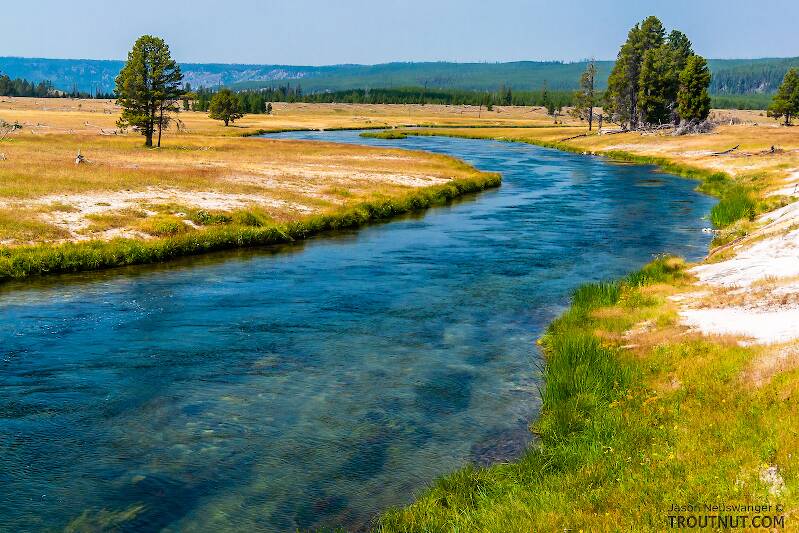
Salmonflies
Pteronarcys californica
The giant Salmonflies of the Western mountains are legendary for their proclivity to elicit consistent dry-fly action and ferocious strikes.
Featured on the forum

Nymphs of this species were fairly common in late-winter kick net samples from the upper Yakima River. Although I could not find a key to species of Zapada nymphs, a revision of the Nemouridae family by Baumann (1975) includes the following helpful sentence: "2 cervical gills on each side of midline, 1 arising inside and 1 outside of lateral cervical sclerites, usually single and elongate, sometimes constricted but with 3 or 4 branches arising beyond gill base in Zapada cinctipes." This specimen clearly has the branches and is within the range of that species.

Troutnut is a project started in 2003 by salmonid ecologist Jason "Troutnut" Neuswanger to help anglers and
fly tyers unabashedly embrace the entomological side of the sport. Learn more about Troutnut or
support the project for an enhanced experience here.
Stonefly Genus Perlesta (Golden Stones)
This is a large genus in the Acroneuriinae subfamily that currently contains 24 species. Distribution is primarily southern though a few species make it into the East and Midwest. Perlesta placida is reportedly a common species. Only a single western species of limited importance and distribution is known for the southern Rockies.
Genus Range
Identification
To determine whether a specimen of Perlidae belongs to Perlesta, use the Key to Genera of Perlidae Nymphs.
Specimens of the Stonefly Genus Perlesta
1 Female Adult

This stonefly species was the most common insect over the small stream I fished one August afternoon; I saw dozens in their egg-laying flights.
Discussions of Perlesta
Perlesta placida
14 replies
Posted by Mad4Trout on Jul 3, 2011 in the species Perlesta placida
Last reply on Nov 27, 2011 by Mad4Trout
I don't know why "Stoneflies of the United States" has such a limited range for Perlesta placida, but we (Madmen Chapter of TU) have collected them on the Mad River, Logan Co., OH. They were reported by Gaufin (1956, Ohio J. Sci. 56 (6):321-324) in numerous counties. They have been recorded more recently by Ohio EPA.
Start a Discussion of Perlesta
References
- Baumann, Richard W. 1975. Revision of the Stonefly Family Nemouridae (plecoptera) : a Study Of The World Fauna At The Generic Level. Smithsonian Contributions to Zoology undef(211): 1-74.
Stonefly Genus Perlesta (Golden Stones)
Taxonomy
Species in Perlesta
Perlesta adenaAdena Stone
0
0
Perlesta baumanniDarkwing Stone
0
0
Perlesta browniToothed Stone
0
0
Perlesta cinctipesPlains Stone
0
0
Perlesta decipiensWidespread Stone
0
0
Perlesta lagoiGulf Stone
0
0
Perlesta placidaFreckled Stoneflies
0
0
Perlesta xubePawnee Stone
0
0
Species in Perlesta: Perlesta adena, Perlesta baumanni, Perlesta browni, Perlesta cinctipes, Perlesta decipiens, Perlesta lagoi, Perlesta placida, Perlesta xube
10 species (Perlesta bolukta, Perlesta dakota, Perlesta etneri, Perlesta frisoni, Perlesta fusca, Perlesta golconda, Perlesta nelsoni, Perlesta nitida, Perlesta shubuta, and Perlesta teaysia) aren't included.

